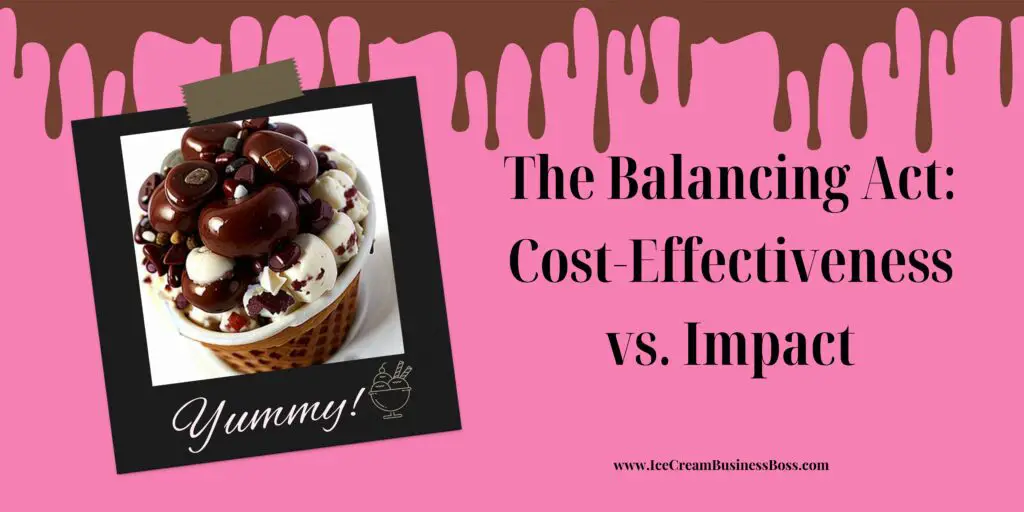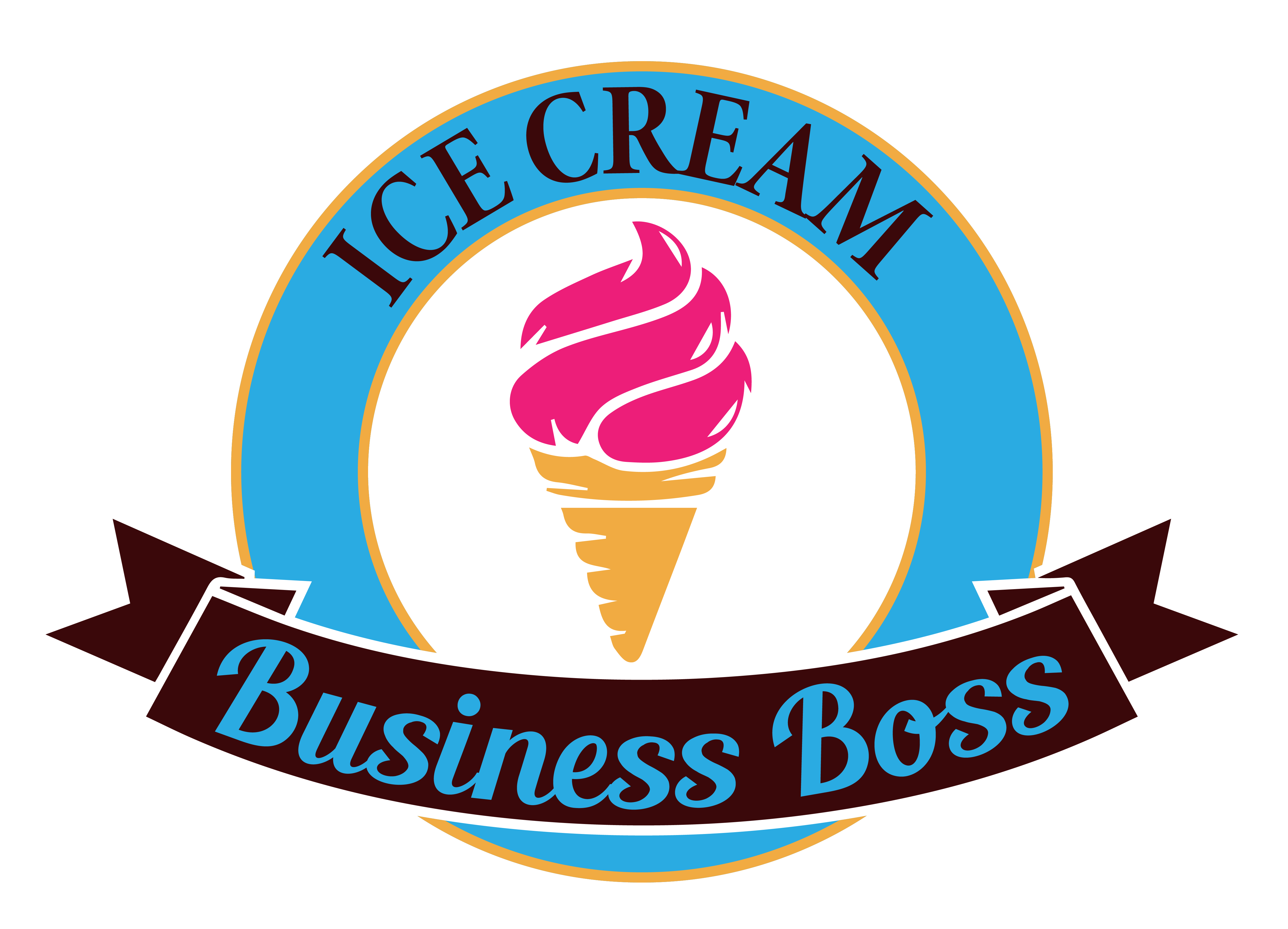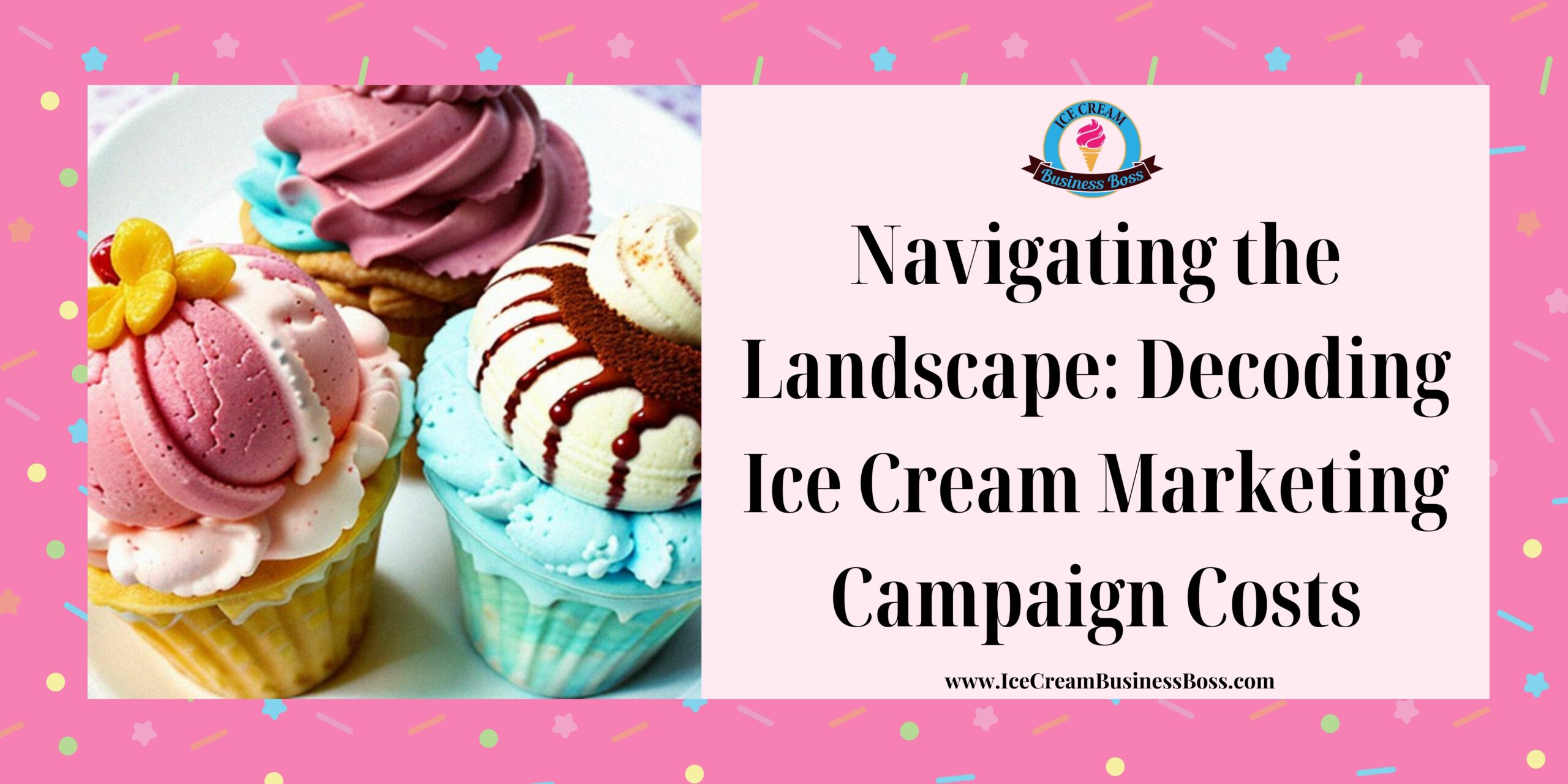A scoop of creamy, luscious ice cream is a delight shared by people of all cultures and ages. Underneath the swirls of flavor and the ecstasy they provide is a complex world of marketing methods, where every lick and bite has been meticulously planned to tickle taste buds and capture hearts. Ice cream marketing efforts have become more diversified and dynamic than ever before as the digital age continues to reinvent how firms communicate with their consumers. However, the very real and physical costs that fuel these efforts are hidden beneath the layers of creativity and involvement.
The most useful insight into expenses comes from understanding ice cream marketing campaign costs, spanning from a few thousand to several hundred thousand dollars, influenced by scope, platforms, and duration.
Scope: A Canvas of Possibilities
The comparison of an ice cream marketing campaign to a canvas for an artist conveys the idea of how the scope of the campaign establishes the boundaries within which achievement may be attained. A marketing campaign succeeds within the restrictions imposed by its scope, just as an artist imagines and then brings to life a masterpiece within the constraints of a canvas. This scope is more than simply an outline; it acts as the structure that guides the campaign’s course and determines its funding needs.
The complexity of a campaign’s scope is a crucial element that can make or break its financial planning and budgeting. A modest local audience campaign that focuses on a single neighborhood or community contrasts sharply with a huge national launch that spans numerous cities and regions. Costs for a local campaign are primarily related to grass-roots activities like neighborhood marketing, neighborhood gatherings, and online outreach via sites like social media. Flyers handed out in the neighborhood and print ads in local publications could also be quite effective in getting the word out.
On the other hand, a national campaign necessitates a completely different strategy and justifies a significant increase in financial commitment. Such a vast undertaking requires a multifaceted approach, which might include television advertisements to reach a broad audience, partnerships with key people in various places, and possibly even opulent outdoor displays like billboards carefully positioned in high-traffic areas. These promotion channels require not only imaginative thinking but also considerable financial support.
The campaign’s reach extends beyond traditional advertising mediums to the whole range of content production. If the campaign’s focus is on telling an enthralling story visually, it may be necessary to make large investments in professional photography, cinematography, and graphic design. These artistic additions not only improve the aesthetic appeal of the campaign but also increase its overall cash total. To maintain uniformity and cohesion across all touchpoints, more resources are needed the more complex and wide-ranging the campaign’s reach.
The scope broadens its effect to include the objectives, messaging, and communication strategy at the core of the campaign strategy. While a national launch may be planned to create a bigger corporate image with a universal appeal, a local campaign may stress community engagement while employing accessible language and visuals. It takes a variety of resources—both financial and intellectual—to create these various tales, all of which are closely related to the scope of the campaign.
Check out this article to learn more about the rolled ice cream business.
Platforms: Navigating the Digital Seas

Digital platforms have become the main venue for brand visibility and engagement in the ever-expanding world of modern marketing. These platforms, with their unmatched reach and precise targeting powers, are crucial in determining the course of an ice cream marketing campaign. The choice of which platforms to use has a significant impact on the campaign’s overall cost and serves as a compass for allocating money and distributing expenses.
The virtual arenas in which firms compete for consumer attention have evolved to include social media behemoths like Instagram, Facebook, and Twitter. These platforms offer numerous chances for developing affordable advertisements that precisely target desired consumers. However, even in these safe havens of digital marketing, expenses are still changeable and dependent on a complicated web of factors like ad placement, audience demographics, and the state of the market.
Take Instagram, for instance, which has a constantly changing landscape. Setting aside funds for sponsored posts, stories, and carousel advertisements may be necessary to carry out a well-rounded campaign. A layer of financial strategy is added by selecting between the pay-per-click (PPC) and pay-per-impression (CPM) models, each of which has different effects on the campaign’s costs.
The expanding practice of influencer marketing, which involves partnerships with people who have devoted followings, adds another level of complexity. Even though these partnerships can produce outstanding results in terms of awareness and engagement, a sizeable amount of the campaign’s overall cost goes toward paying influencers.
Beyond social media, a well-planned campaign might broaden its digital reach to include Google Ads, the entry point to the world of internet search. The financial landscape in this case is determined by how competitive the keywords are.
The delicate dance between keyword popularity and relevancy is one that advertisers must master because it affects the cost of each click. The wide range of ad formats, from display ads to search ads and video commercials, also introduces a variety of price points, each of which contributes to the campaign’s overall financial picture.
The careful selection and coordination of the relevant platforms and techniques are essential to ice cream marketing in the digital sphere. This approach is inextricably linked to spending optimization and making sure that every dollar invested has the greatest possible impact. The modern marketer must be able to analyze the subtleties of each platform, interpret the constantly changing algorithms, and predict audience behavior.
Duration: Racing Against Time

Timing is a key factor that can determine a campaign’s financial outlook in the dynamic world of ice cream marketing. The timeline of a campaign’s development has a significant impact on costs, effectively acting as a conductor to coordinate resource allocation and outlay.
The length of a campaign appears as a key element in this complex ballet of marketing tactics. The length of a campaign, which serves as the canvas for its narrative, can influence how much money is spent. Ephemeral in nature, short-term campaigns frequently take the form of seasonal promotions or one-time deals. These campaigns appear as focused bursts of activity that call for a frenzy of quick but intense activities.
The terrain of long-term campaigns, however, beckons. These strategic initiatives center on creating and sustaining a brand’s presence and involvement in consumers’ hearts and thoughts. Such efforts, which carry the burden of longevity, demand a consistent dedication over a protracted period. This dedication manifests itself in a steady stream of content production, engaged community participation, and the possible recalibration of strategy based on continuing performance evaluation.
The length of a campaign has a variety of financial effects. The costs spread their tendrils throughout various domains for lengthy campaigns. Costs associated with content creation, including graphic design, photography, and videography, are driven by the ongoing requirement for relevant and interesting information. The extended timescale necessitates a greater need for monitoring systems, analytical platforms, and the personnel required for ongoing management and optimization.
Campaign duration’s delicate tango with another crucial element, frequency, smoothly meshes. Financial factors function in combination with the pace at which campaigns develop, whether in weekly bursts of updates or a continuous cadence of daily articles.
While encouraging a sense of ongoing engagement, frequent campaigns may unintentionally increase costs. Costs associated with creative production and administration are incurred by the unrelenting demand for an ongoing stream of fresh and appealing content. Due to the accelerated pace, financial commitments become a more significant part of the overall budget.
The union of timing and duration in this complicated dance creates a symphony that orchestrates the financial landscape of ice cream marketing campaigns. Budgetary allotments are impacted by the decision between short-term intensity and long-term endurance, which affects the amount and kind of spending. Campaign frequency further shapes the rhythm of expenses, emphasizing the importance of creative and strategic management.
Learn if an ice cream business is a good investment for your or not by visiting this article here.
The Balancing Act: Cost-Effectiveness vs. Impact

Understanding the subtleties of scope, platforms, and duration of campaign expenditures is unquestionably essential in the always-changing world of ice cream marketing. The ultimate growth, however, is found in the symbiotic relationship between cost-effectiveness and impact, when a deliberate dance between prudent money management and resonant resonance is executed.
Recognizing that a sizable investment doesn’t necessarily guarantee growth and that a conservative strategy could lead to missed opportunities center stage in this complicated choreography. Therefore, careful preparation and wise choice-making are highlighted as the key components of an effective campaign.
The setting of distinct and unwavering goals serves as the cornerstone of this dance. It’s similar to setting out the campaign’s choreography; each action must be in line with these goals. These objectives serve as the compass, whether the aim is to increase brand recognition, sales, or engagement levels.
With these goals in mind, resource allocation becomes a strategic undertaking. For example, a national campaign seeking wide awareness could justify a higher budget by realizing the proportionate relationship between investment and reach. On the other hand, a small-scale event may succeed and reach its objectives within the constraints of a more constrained budgetary framework.
The choreography doesn’t stop there, though. An astute choreographer (or marketer) carefully takes into account the interests and inclinations of the audience. An ice cream marketing campaign should match its platforms with the audience’s preferences, just as a dance performance alters its rhythm to suit the mood of the audience.
For instance, a campaign aimed at a younger audience can find achievement on social media sites like Instagram and TikTok, where visual and interactive content is dominant. On the other hand, a more sophisticated audience might react better to the cadence of Facebook and email marketing. This clever synchronization of platforms with audience demographics lowers waste while also optimizing the campaign’s financial performance.
The real skill in this choreography, though, is in how it makes use of the data-driven insights that emerge as the campaign progresses. These perceptions act as a mirror, reflecting the activity on the stage. Regular key performance indicator (KPI) monitoring provides a bird’s-eye view of the campaign’s effectiveness.
KPIs range from click-through rates and engagement metrics to conversion rates. The marketer can identify what is succeeding and what is failing thanks to this data-driven monitoring. Similar to how a dancer alters their movements in response to audience reactions, these insights serve as prompt indications for wise modifications. These adjustments improve the campaign’s growth while also having an impact on how cost-effective it is.
Frequently Asked Questions
What is the average cost of an ice cream marketing campaign?
The cost of an ice cream marketing campaign varies greatly depending on numerous factors. The campaign’s scope, particularly its scale and reach, can have an impact on costs. The choice of platforms and the duration of the campaign also play an effect. Campaigns can cost anywhere from a few thousand to several hundred thousand dollars, depending on their goals and target demographics.
Which platforms are most suitable for low-cost ice cream marketing campaigns?
The platforms used for ice cream marketing are determined by the target audience and campaign goals. Instagram and Facebook, for example, provide cost-effective choices for precision audience targeting. However, prices might differ depending on ad types, placements, and competition. TikTok may be appropriate for younger populations, whilst Google Ads may be effective for search-oriented advertising.
How can I cut costs while still running an effective ice cream marketing campaign?
It is critical to strike a balance between cost-effectiveness and impact. Begin by defining your campaign’s objectives. Adapt your plan to your target audience’s preferences and behavior. Monitor key performance indicators (KPIs) regularly to fine-tune your approach as needed.
Remember that a larger expenditure does not always ensure growth; strategic planning and data-driven modifications are critical to running a campaign on a limited budget.
The information provided by IceCreamBusinessBoss.com (“The Site”) is for general informational purposes only. All information on the Site is provided in good faith, however, we make no representation or warranty of any kind, express or implied, regarding the accuracy, adequacy, validity, reliability, availability, or completeness of any information on the Site. Under no circumstance shall we have any liability to you for any loss or damage of any kind incurred as a result of the use of the Site or Reliance on any information provided on the Site. Your use of the Site and your reliance on any information on the Site is solely at your own risk. This blog post is for educational purposes only and does not constitute legal advice. Please consult a legal expert to address your specific needs. Terms and Conditions.

Hi! I am Shawn and I am a happy individual who happens to be an entrepreneur. I have owned several types of businesses in my life from a coffee shop to an import and export business to an online review business plus a few more and now I create online ice cream/gelato business resources for those interested in starting new ventures. It’s demanding work but I love it. I do it for those passionate about their business and their goals. That’s why when I meet a ice cream/gelato business owner, I see myself. I know how hard the struggle is to retain clients, find good employees and keep the business growing all while trying to stay competitive.
That’s why I created Ice Cream Business Boss: I want to help ice cream and gelato business owners like you build a thriving business that brings you endless joy and supports your ideal lifestyle.

